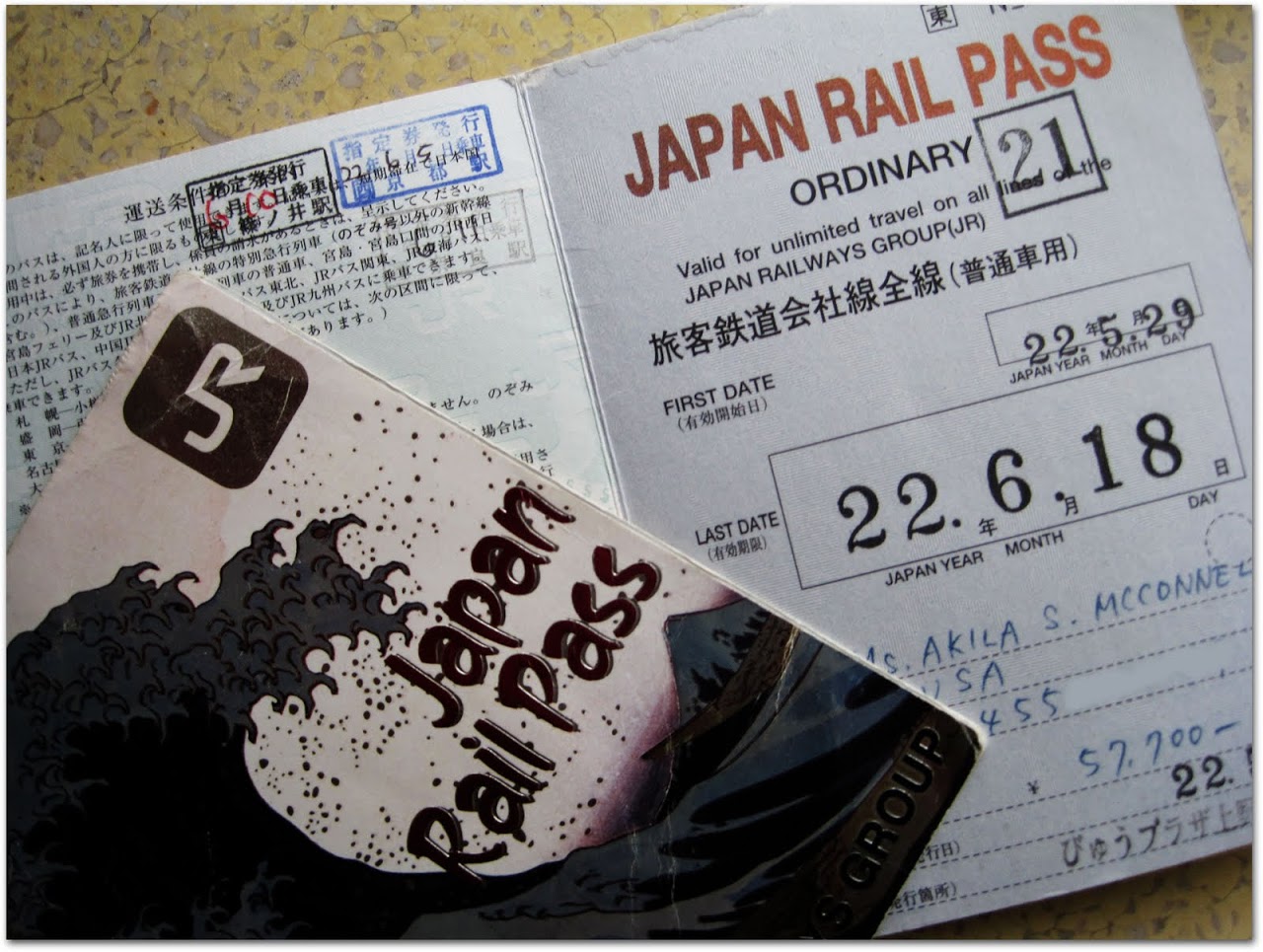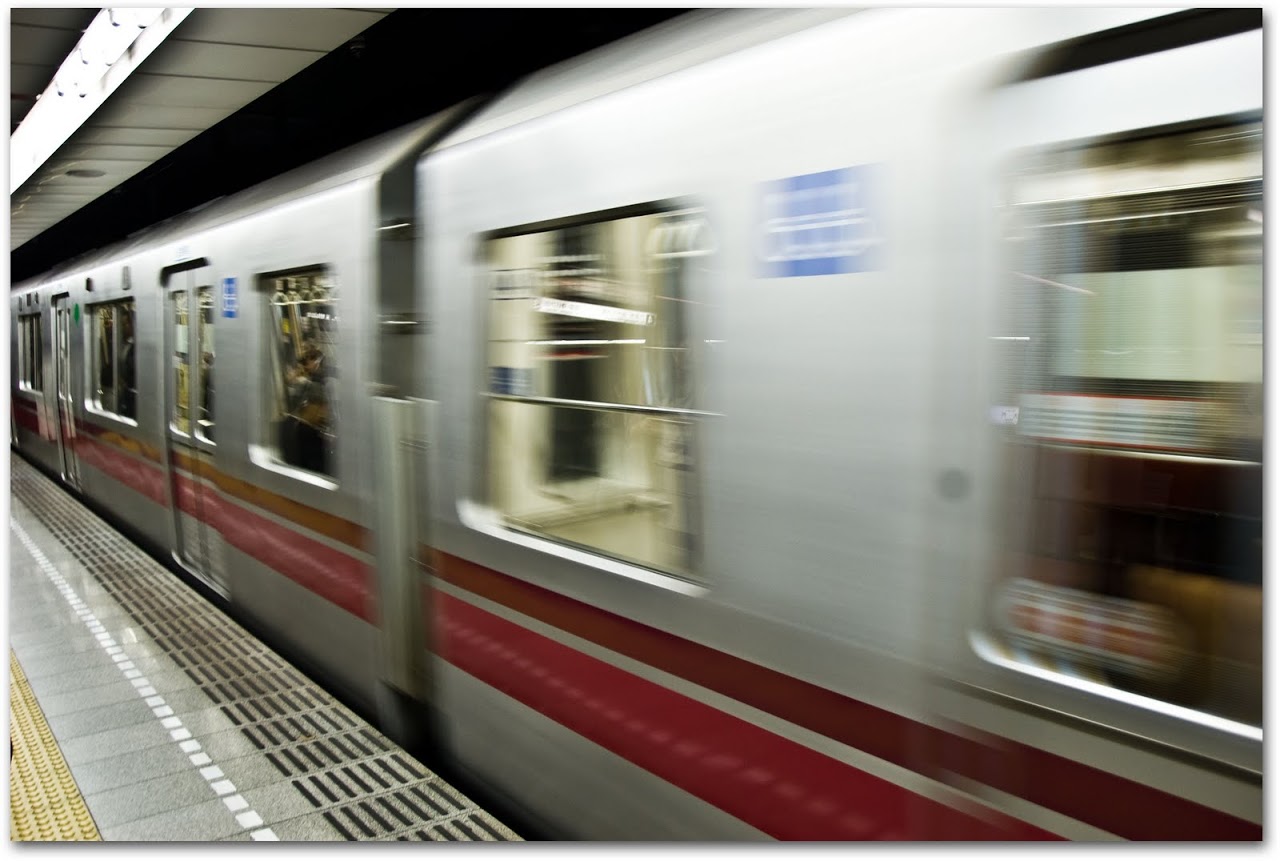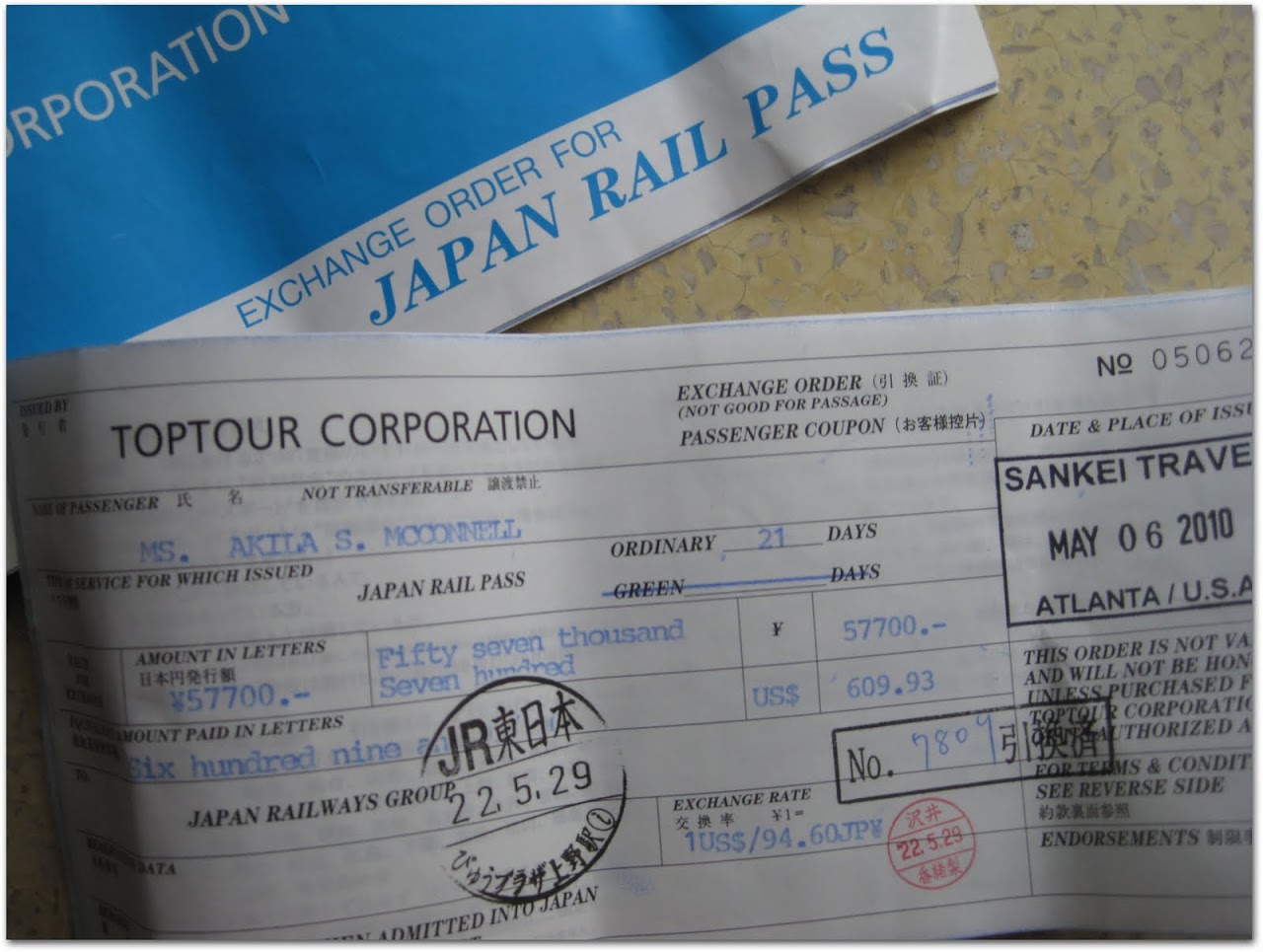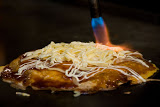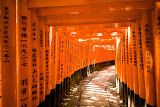Let us just say that you're the sort of person who is obsessed with managing money to the penny, who has meticulously recorded every purchase made since she was fifteen in a Quicken document, and, let's just say that you're married to a guy who creates intricate Excel spreadsheets with built-in currency converters to manage all of the receipts accumulated during a year long trip, then this post is for you. But, really, even if you're not that sort of person, this post is for you because, on an extended trip, $15 saved in Japan could pay for one full day of lodging and food in Thailand .
The question of the day:
should you buy a
Japan Rail Pass
for a trip to Japan?
The answer:
it depends on your itinerary
. Generally, if you move at a moderate pace --- that is visiting a different place every four to five days --- and travel to major cities to use the Shinkansen trains, it is going to save you money.
{ Full geek-out warning here: This post is going to involve numbers and assumptions and, unfortunately, very few pretty pictures . . . unless I get bored, in which case, I might try Photoshopping pictures of Chewy and Abby onto Japanese trains .}
First, what is a Japan Rail Pass ? The Rail Pass is Japan's invitation to foreigners to tour their country via the rail system. Any foreign tourist entering as a "temporary visitor" or a Japanese national living in a foreign country is eligible to purchase a Rail Pass to sightsee around Japan.
How much does it cost? There are two general types of Rail Passes: ordinary and green car (first class). We purchased ordinary passes and were surprised by the comfort in those sections of the trains. The ordinary cars include clean restrooms at the end of each compartment and have overhead storage for medium sized bags (we fit ours above our head) and storage at the end of each compartment for larger bags/suitcases. Most ordinary cars are in a 3-2 configuration with three seats on one side and two on the other. The green cars are in 2-2 configurations, have more space for luggage, and are generally a bit nicer. If you are used to flying coach, then I suggest purchasing an ordinary pass but, if you opt for first-class flights, then purchase the green pass.
You can purchase a Rail Pass for 7, 14, or 21 days depending on the duration of your trip.
| Green Adult | Green Child | Ordinary Adult | Ordinary Child | |
| 7-day |
37,800 Yen ($378 USD) |
18,900 Yen ($189 USD) |
28,300 Yen ($283 USD) |
14,150 Yen ($142 USD) |
| 14-day |
61,200 Yen ($612 USD) |
30,600 Yen ($306 USD) |
45,100 Yen ($451 USD) |
22,550 Yen ($226 USD) |
| 21-day |
79,600 Yen ($796 USD) |
39,800 Yen ($398 USD) |
57,700 Yen ($577 USD) |
28,850 Yen ($289 USD) |
*prices based on ACPRail's current Rail Pass prices
What does the Rail Pass include? The Rail Pass is your one-stop ticket to all JR lines in the country EXCEPT for Nozomi (the super-high speed Shinkansen trains), the Tokyo monorail, and JR ferries such as the ferry from Hiroshima to Miyajima. The Rail Pass may not be used for local city buses (such as those in Kyoto), non-JR lines (much of the subway system in Tokyo), and non-JR private railways (such as the one that we took from Nagano to Chikuma City and to other small cities.)
What sort of itinerary do I need to make the Rail Pass worthwhile? This may make your head spin a little but this is the sort of calculus you need in order to determine whether to buy the Rail Pass.
The clasic 2-week trip: Let's assume that you plan on doing a typical 2-week Japan itinerary: Tokyo, with a day trip to Nikko, then on to Kyoto, Nara, and Hiroshima, and back up to Tokyo. Here is the break down of the transportation costs for this trip assuming that you don't have a JR Pass:
| Without a Rail Pass |
With a Rail Pass
|
|
| Tokyo to Nikko | 2520 Yen | |
| Nikko to Tokyo | 2520 Yen | |
| Tokyo to Kyoto | 13100 Yen | |
| Kyoto to Nara | 690 Yen | |
| Nara to Hiroshima | 10990 Yen | |
| Hiroshima to Tokyo | 18,750 Yen | |
|
Traveling around the cities on JR lines
(about 100 -300 Yen per trip) |
about 2,500 Yen | |
| Ordinary JR Rail Pass for 14 days | 45,100 Yen | |
| Total | 51,070 Yen | 45,100 Yen |
That's a tidy 5,970 Yen ($63 USD) that you are saving with the Rail Pass; enough for a sushi or kaiseki dinner .
A fast-paced 2-week trip : If you follow the advice of the fine folks over at Frommers , you might opt for a trip through the highlights of Honshu Island that would take you from Tokyo to Nikko to Takayama to Kyoto to Nara to Mount Koya to Kurashiki to Hiroshima, winding up in Osaka for a flight back home. Whew! That would look like this:
| Without a Rail Pass | With a Rail Pass | |
| Tokyo to Nikko | 2520 Yen | |
| Nikko to Takayama | 18560 Yen | |
| Takayama to Kyoto | 8780 Yen | |
| Kyoto to Nara | 690 Yen | |
| Nara to Mount Koya (Koyasan) | 1770 Yen | 1230 Yen* |
| Mount Koya (Koyasan) to Kurashiki | 4760 Yen | 1500 Yen* |
| Kurashiki to Hiroshima | 4930 Yen | |
| Hiroshima to Osaka | 10350 Yen | |
| Traveling around the cities on JR lines (about 100 to 300 per trip) | about 2,500 Yen | |
| Ordinary JR Rail Pass for 14 days | 45,100 Yen | |
| Totals | 54,860 Yen | 47,830 Yen |
*Part of this route is on a private railway
At this more hurried pace, you end up saving a bit more: 7,030 Yen ($80 USD) by buying the Rail Pass.
And, then, what we did: We started off in Tokyo but did not activate our Rail Passes until the day before we planned to leave Tokyo. So, we went from Tokyo to Kyoto to Nikko to Nagano to Nara to Hiroshima to Aso in Kyushu Island, winding up in Fukuoka, on a 21-day pass. We moved pretty slowly, spending 8 days in Kyoto, 3 days in Nagano, and 2 days each at the remainder of the cities, but went to some far flung destinations. So, how did we fare?
| Without a Rail Pass | With a Rail Pass | |
| Tokyo to Kyoto | 13100 Yen | |
| Kyoto to Nikko | 18,410 Yen | |
| Nikko to Nagano | 10,270 Yen | |
| Nagano to Nara | 11,970 Yen | |
| Nara to Hiroshima | 10,870 Yen | |
| Hiroshima to Mount Aso | 11,530 Yen | |
| Mount Aso to Fukuoka (Hakata Station) | 5,020 Yen | |
| Traveling around the cities on JR lines (about 100 to 300 per trip) | about 4,000 Yen | |
| Ordinary JR Rail Pass for 21 days | 57,700 Yen | |
| Totals | 85,170 Yen | 57,700 Yen |
We ended up saving a whopping 27,470 Yen ($312 USD) per person because we backtracked quite a bit and went to both Honshu and Kyushu islands. That's an awesome savings for both of us!
And, another quick itinerary : Jess, over at To China and Beyond!, started in Osaka, then went to Kyoto, Nara, Himeji, Hiroshima, Fukuoka, Kobe, Yokohama, Tokyo, Nagoya, and back to Osaka, within two weeks. She saved an eye-popping 34,640 Yen ($397 USD) by purchasing the Rail Pass.
When it's all said and done, the Japan Rail Pass is a great deal for those traveling in a limited time frame in Japan if you move at a moderate pace and/or visit destinations in different parts of the country.
Vouchers
How do you buy a JR Rail Pass? The Japan Rail Pass must be purchased outside of Japan before you begin your trip at a participating agent or online (such as from ACP Rail ). If you forget to purchase it outside of Japan, then regions of Japan offer rail passes at JR stations within the country (e.g., Kyushu Pass , Hokkaido Pass ) but those passes tend to be much more expensive. Your travel agent will send you a voucher that is valid for three months. When you arrive in Japan, you must produce your passport and the voucher to a major JR station (voucher locations are provided with the book that comes with the Rail Pass) and they will provide you with the Rail Pass that is valid for 7, 14, or 21 days from the date you turn in your voucher.
How do you use the Rail Pass? We walked into any station, asked the agent (who often speaks English) that they make us a reservation onto the next train to wherever we were going, showed our Rail Pass at the ticket counter, and then sauntered onto the train. We just love those efficient, comfortable Japanese trains.
How do you figure out all these calculations? Use Hyperdia , possibly the greatest trip planning tool I have ever found for any country.








